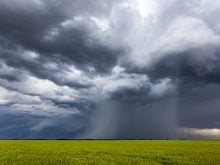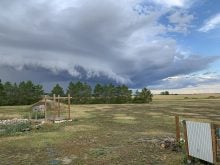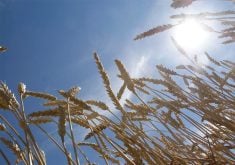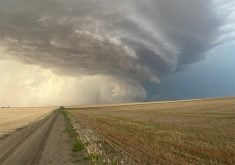Besides drought, frost probably has the greatest impact on agriculture.
Using a climatic definition, frost occurs when the temperature of the land surface drops below 0 C, but with respect to agriculture, frost is substantially more difficult to define.
Looking at cereal crops, for example, a temperature of 0 C will not result in crop death. In fact, the crop will rarely be damaged at that temperature. When it comes to agriculture, the terms killing frost or freeze are more useful.
A killing frost usually refers to conditions in which more than 50 per cent of the vegetation in a region has been killed by frost, and a freeze is when ice crystals form in plant tissue, resulting in permanent injury.
Read Also

Short rapeseed crop may put China in a bind
Industry thinks China’s rapeseed crop is way smaller than the official government estimate. The country’s canola imports will also be down, so there will be a lot of unmet demand.
At what temperatures are different crops affected? There are three development stages in which crops have varying degrees of resistance to frost: germination, flowering and fruiting.
The germination stage has the greatest resistance to frost, whereas flowering has the least resistance. In the germination stage, crops such as spring wheat and oats can resist temperatures as low as –8 to –10 C. Compare this to crops such as corn, cucumbers and tomatoes, which will suffer damage when temperatures drop only slightly below 0 C.
In the sensitive flowering stage, every crop is susceptible to frost, with critical temperatures in the 0 to –3 C range, so this period of growth concerns growers the most when dealing with frost.
Topography can have a significant effect on which areas receive frost. Since cold air is denser than warm air, it will flow downward and accumulate in lower areas. This phenomenon has been referred to as frost hollows, cold islands, cold air pooling and cold air lakes.
No matter how you describe it, there doesn’t have to be a huge change in elevation to have a significant impact on temperature. In one study, a change of less than one metre in elevation over 100 metres resulted in overnight temperature differences of 3 C to 5 C. This is why you can experience frost even though your thermometer says it’s above freezing.
I know this from personal experience. You can’t tell by looking at my land, but I am at a low spot — by only about one metre. I can see this in spring when there is heavy runoff. Due to this dip, I routinely get frost or much colder temperatures than my neighbours.
There are two types of frost: radiative and advective.
Radiative frost is the typical kind experienced on a clear, calm night. Calm conditions allow heat to escape into the atmosphere, cooling the lowest layers.
You can prevent frost damage by covering your gardens, trapping the heat stored in the soil. Another method is to spray water on them. This works because water has a large amount of heat energy to release, which keeps temperatures warmer.
The third measure is to stir up the lower levels of the atmosphere. This can be done using fans or fires to create convection currents. Studies have shown that on radiational cooling nights, temperatures a metre or two off the ground can be as much as 2 to 5 C warmer.
The second type of frost, advective frost, is more difficult to manage. It occurs when a cold or sub-zero air mass moves into a region. It is usually accompanied by wind and lasts much longer. Since all levels of the atmosphere are cold, we cannot pull in warmer air, and since it lasts longer, using water will probably not work.
The only thing left to do is cover the garden and hope for the best.
Daniel Bezte is a teacher by profession with a BA in geography, specializing in climatology, from the University of Winnipeg. He operates a computerized weather station near Birds Hill Park, Man. Contact him at dmgbezte@gmail.com.
















